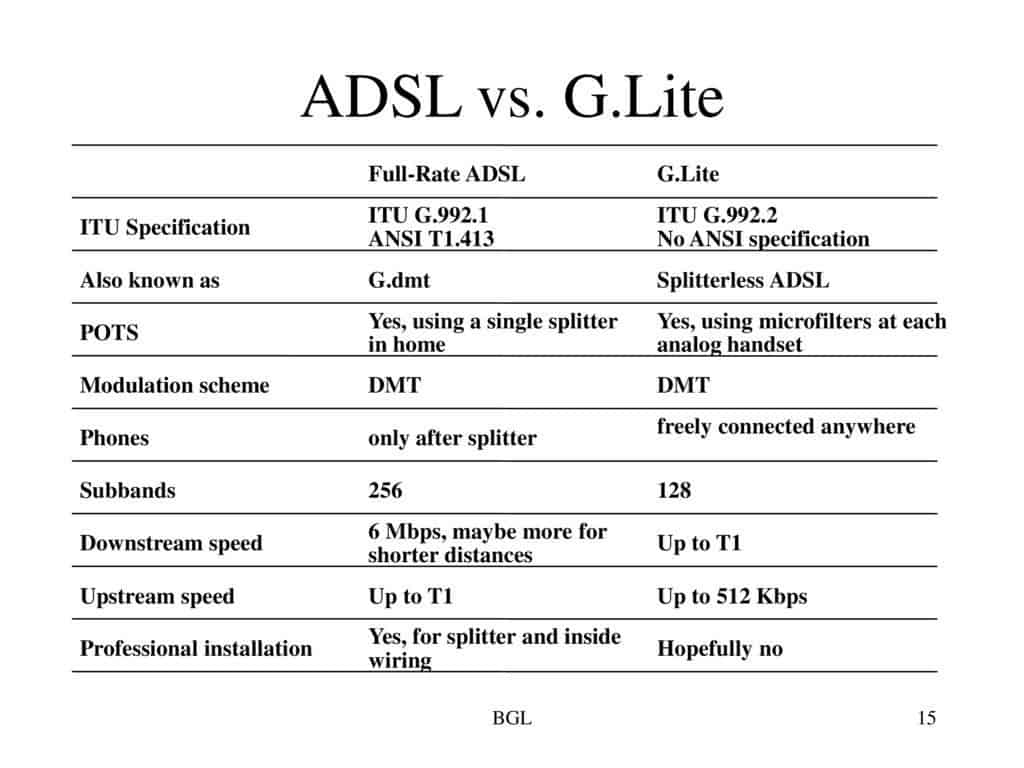G.Lite is a variation of Asymmetric Digital Subscriber Line (ADSL) that is targeted for home Internet access. Continue reading for detailed info.
What is G.Lite?
G.Lite is a variation of Asymmetric Digital Subscriber Line (ADSL) that is targeted for home Internet access. G.Lite typically has a downstream rate of up to 1.5 Mbps and an upstream rate of up to 384 Kbps, depending on the implementation.
G.Lite is also called DSL Lite or Universal ADSL. The International Telecommunication Union (ITU) has endorsed the term “G.Lite” as a standard.

How It Works
G.Lite is sometimes referred to as “splitterless ADSL” because a voice-data splitter is not required at the customer premises to split the voice and data signals being carried over the line. This is different from normal ADSL, which uses a Plain Old Telephone Service (POTS) splitter at both the customer premises and the telco’s central office (CO) to separate the voice and DSL bands for transmission over the phone line to prevent them from causing interference with each other.
Instead, the customer’s computer simply connects to a G.Lite ADSL modem and from the modem to the phone line. No rewiring of the customer premises is required, because G.Lite uses the installed local loop connection to the customer premises. Customers can make phone calls or send faxes while connected to the Internet over their G.Lite connection.
G.Lite connections are “always on”; in other words, once you turn your computer on, the connection is active and you can send or receive e-mail without having to dial up a connection.
Because of the elimination of the need to install splitters, G.Lite services should be less expensive for customers than ordinary ADSL services and should become widespread in the near future.
NOTE
The quality of an ADSL connection to your home can suffer if you have a large number of RJ-11 phone jacks installed. This is because each phone jack acts as a bridged tap that is run off the main phone line as a parallel connection. Signals traveling along your phone line can reflect off these jacks and affect the overall reliability of your ADSL connection.
Also, the farther your home is from the telco CO, the less bandwidth might be available for your ADSL connection.
